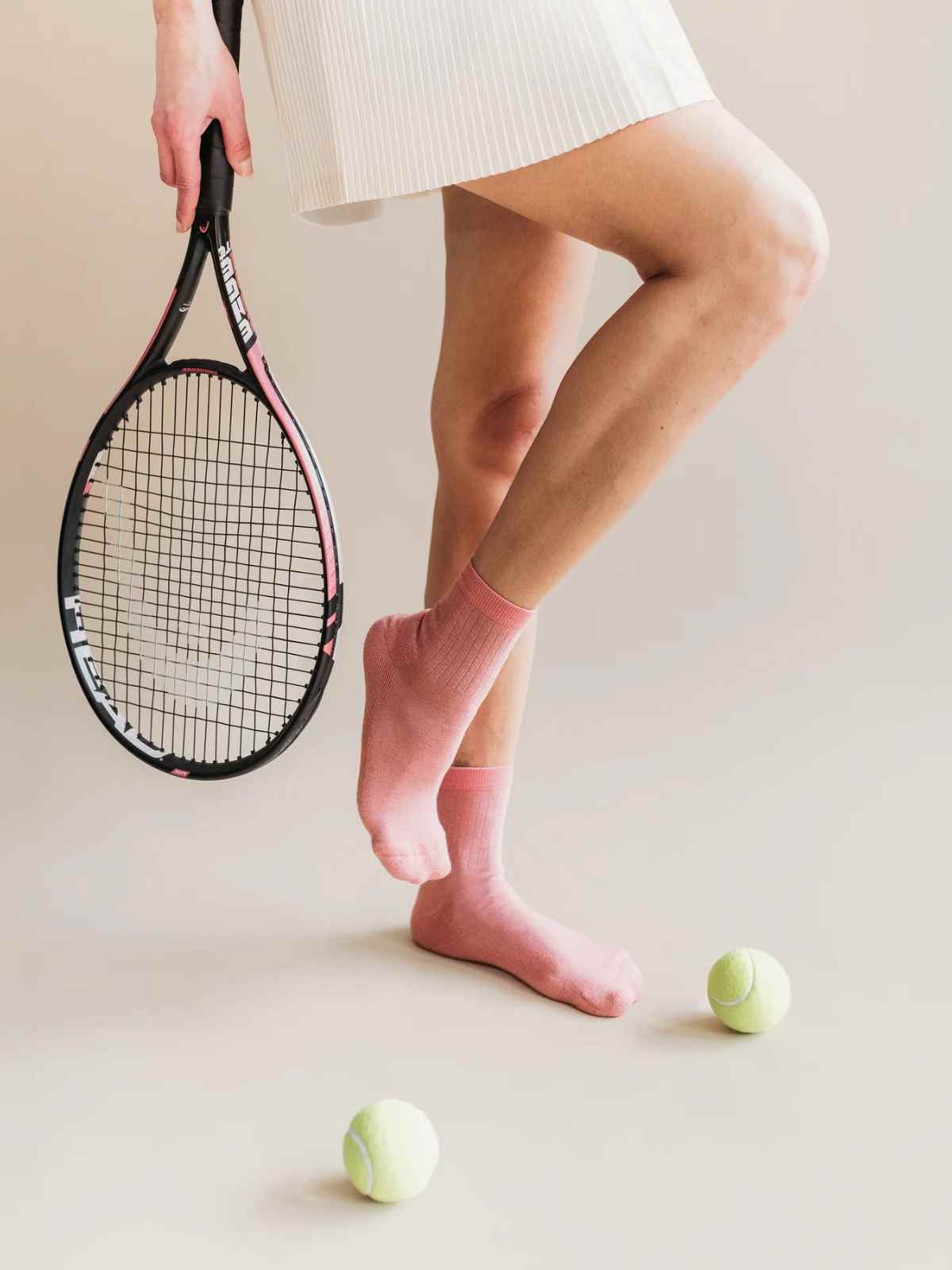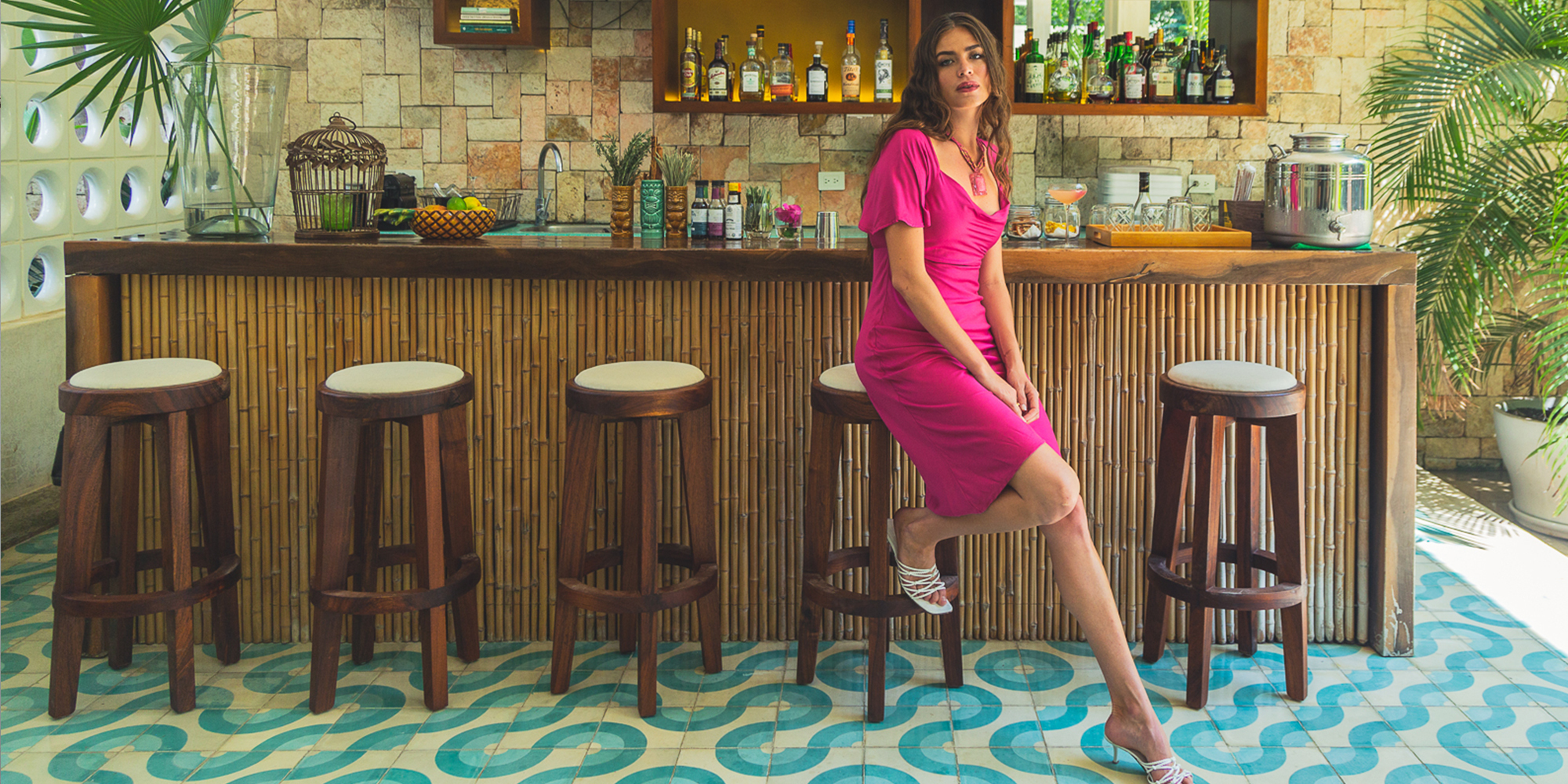Breaking news: eucalyptus trees aren’t just wonderful to nourish koalas and as medicinal remedies for us—it turns out that they can also be used to create a versatile fabric which is breathable, absorbent, and soft.
Eucalyptus fabric is often described as a sustainable alternative to conventional cotton, but how is it made and how sustainable is it overall in terms of its impacts on people, the planet, and animals?
Lyocell… what’s in a name?
Clothes derived from eucalyptus trees are typically made from lyocell fabric, also known as TENCEL, the brand name of the lyocell fabric developed by Austria-based company Lenzing.
The process to manufacture lyocell is as follows: the eucalyptus wood is harvested (note that other types of wood can also be used), cut into pieces, and ground into a pulp before being dissolved with a solvent called amine oxide. This produces a viscous liquid, which is then pushed through spinnerets from which the lyocell fibres come out. Once washed and dried, they are spun into yarn which is finally woven to create lyocell fabric.
How green is it?
On the face of it, eucalyptus fibre seems pretty sustainable—but it depends!
Eucalyptus trees are felled rather than uprooted, meaning that there is no need to continuously plant new trees. They also grow quickly, don’t need irrigation or pesticides, and can grow in relatively poor, dry, and rocky soil.
Lenzing have demonstrated that it is possible to create a closed-loop system in the manufacturing of lyocell: they manage to recover and reuse 99% of the solvent in new processing cycles. In addition, the solvent is considered non-toxic for air and water. This approach minimizes any environmental impacts. And, crucially, the wood used by Lenzing originates from sustainable forestry—more on this below.
When compared to conventional cotton, the lyocell production process used 50% less water.
Finally, in terms of product use and end-of-life, lyocell doesn’t release toxic microfibres—a significant advantage over synthetic fabrics—and is recyclable and biodegradable.
So, what’s not to like?
Essentially, intensive monocultures. In Spain and Portugal, for example, native forests have been destroyed to introduce eucalyptus plantations (albeit mainly for the paper industry) causing environmental degradation to the local ecosystems of plants and wildlife.
Canopy, a Canada-based organisation dedicated to the conservation of forests—in particular, ancient and endangered forests—highlights that 150 million trees per year are logged in order to produce the cellulosic fabrics used in our clothes—some of it rayon/viscose, some of it modal and… yes, lyocell too.
As Canopy neatly puts it: “…where the eucalyptus comes from matters. Eucalyptus is often grown on concessions that have had natural forest cleared and carbon rich peatlands drained, causing massive social and environmental concerns. However grown in the right place, under the right conditions, eucalyptus can be fabulous!”
So the key is to choose eucalyptus fabrics originating from sustainably-managed forests, like from PEFC or FSC.
A-OK for animals and people?
Lyocell appears to be mostly harmless for both animals and people.
For one thing, it’s a vegan fabric—as long as it’s not blended with wool, silk, or other animal-derived fibres, of course. And if it originates from sustainably-managed forests, where ecosystems are allowed to continue to flourish, then no obvious harms will have been caused to animals.
In terms of people, as the production process is non-toxic, communities are not affected by pollution. Equally, as the process relies on a series of lab-based manufacturing steps, it is not especially labour-intensive. Social concerns have been raised in the context of intensive eucalyptus monocultures, in terms of local communities not being consulted about a change of use of land, and losing out on a source of subsistence farming. This is another reason why sustainably-managed forests play an important role in the overall sustainability credentials of the eucalyptus fabric which is used to make our clothes.
Where can I find it?
Thanks to its high absorbency and softness, lyocell is used in a range of clothing items including activewear, underwear, and casual wear.
Given that lyocell can be blended with a range of other fibres—such as wool, silk, cotton and synthetics—in order to “enhance the aesthetics and functionality of fabrics” in the words of Lenzing, it may be that eucalyptus-derived fabrics become increasingly visible in the sustainable fashion space. If purchasing a blend, you may wish to check whether the finished item is still fully recyclable and biodegradable.
And of course, do check the Directory for brands using sustainably-sourced eucalyptus fabric, such as one of our favourites, TAMGA Designs.





















